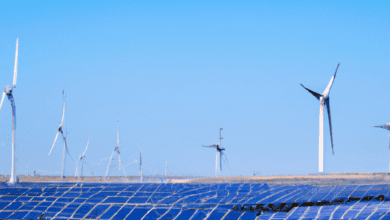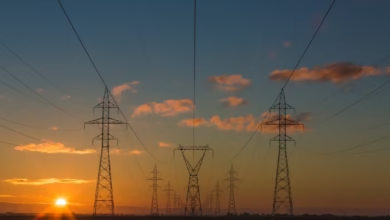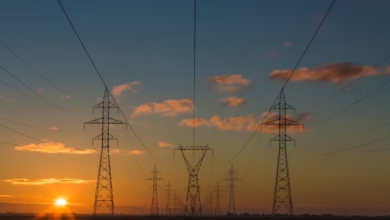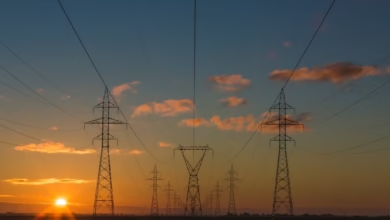Offshore Energy Revolution: Wind Farms, Oil Rigs, and Innovations Shaping the Future of Renewable Energy and Climate Solutions
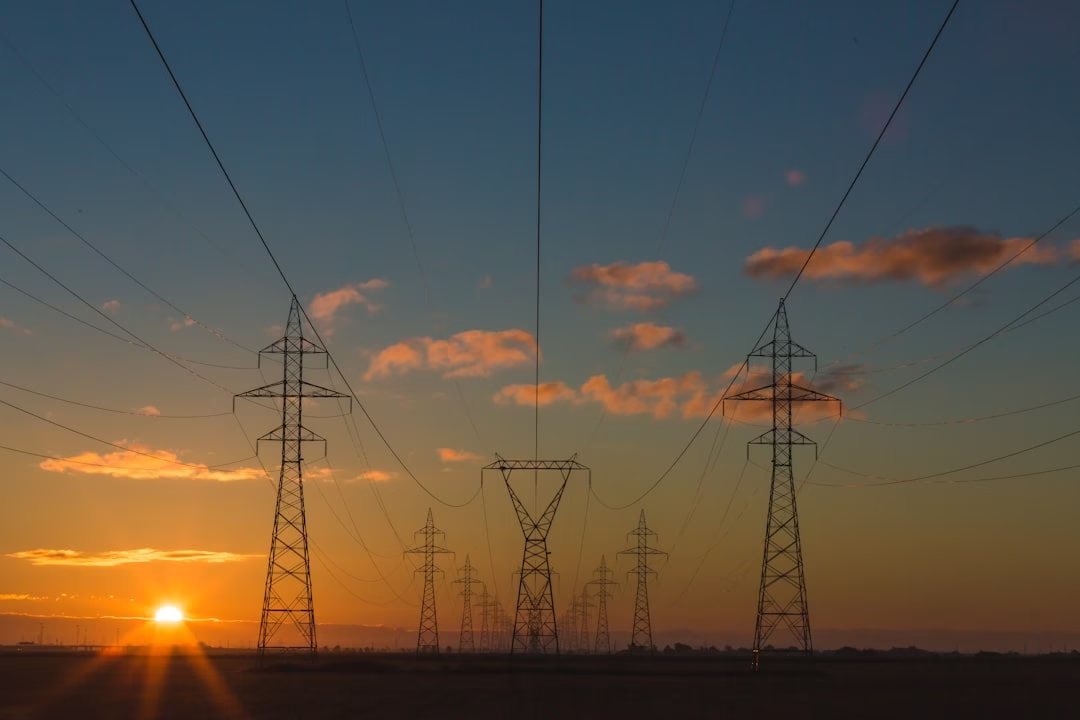
As the world grapples with the urgent need for sustainable energy solutions, offshore energy has emerged as a critical player in the transition towards a greener future. With the expansion of wind farms and the continued presence of oil rigs, offshore energy production is not only reshaping global energy markets but also redefining our approach to energy security and climate change. This article delves into the rise of offshore energy, highlighting its role in the broader energy transition away from fossil fuels and towards renewable energy sources. We will explore the latest innovations that are enhancing energy efficiency and storage capabilities, as well as the strategic implications of offshore energy for energy policy and investment. By examining the interconnectedness of offshore energy with global energy trends, we aim to provide insights into how this sector is poised to influence energy economics, energy exports, and imports, all while addressing the pressing challenges of climate change. Join us as we navigate the complex landscape of offshore energy and its potential to lead us into a more sustainable and resilient energy future.
- 1. The Rise of Offshore Energy: Exploring Wind Farms and Oil Rigs in the Energy Transition
- 2. Innovations in Offshore Energy: How Renewable Energy and Energy Storage Shape the Future
- 3. Navigating Energy Markets: The Role of Offshore Energy in Energy Security and Climate Change Solutions
1. The Rise of Offshore Energy: Exploring Wind Farms and Oil Rigs in the Energy Transition
The global energy landscape is undergoing a significant transformation, driven by the urgent need to address climate change and reduce dependence on fossil fuels. Offshore energy has emerged as a critical component of this energy transition, particularly through the development of wind farms and oil rigs. As countries strive to balance energy security with environmental sustainability, the rise of offshore wind energy presents an exciting opportunity to harness renewable energy sources at sea.
Wind energy has gained considerable traction in energy markets worldwide, with offshore wind farms showcasing the potential for large-scale electricity generation. These facilities utilize advanced technology to capture wind energy, thereby contributing to a cleaner energy mix. The development of these wind farms not only aligns with energy policy goals aimed at reducing carbon emissions but also supports energy efficiency and energy storage solutions, enabling a more resilient energy infrastructure.
In contrast, offshore oil rigs continue to play a significant role in the global energy economy, despite the increasing focus on renewable energy. While fossil fuels remain a dominant source of energy, the industry is witnessing a shift towards integrating carbon capture technologies and improving operational efficiencies. This transition is critical for meeting global energy trends that prioritize sustainability without jeopardizing energy security.
Moreover, the investment in offshore energy is crucial for fostering energy innovations that can lead to breakthroughs in energy R&D. As nations explore diverse energy sources—including hydropower, bioenergy, and hydrogen energy—the role of offshore energy becomes even more vital. By diversifying energy portfolios, countries can enhance their energy exports while reducing energy imports, contributing to a more stable energy economics landscape.
The integration of smart grids and distributed energy systems will further amplify the potential of offshore energy. These technologies enable efficient energy transportation and management, allowing for the seamless incorporation of renewable energy sources into the grid. As electric vehicles gain popularity, the demand for clean energy will continue to rise, making offshore wind farms and oil rigs essential in meeting future energy needs.
In conclusion, the rise of offshore energy, particularly through wind farms and oil rigs, signifies a pivotal moment in the energy transition. By investing in renewable energy and embracing innovative technologies, we can pave the way for a more sustainable and secure energy future, ultimately mitigating the impacts of climate change and enhancing energy security worldwide.
2. Innovations in Offshore Energy: How Renewable Energy and Energy Storage Shape the Future
The offshore energy sector is undergoing a transformative shift, driven by innovations that prioritize renewable energy and energy storage solutions. As global energy trends evolve, the urgency to transition from fossil fuels to greener alternatives becomes increasingly apparent. Wind energy, in particular, has emerged as a leading player in the offshore landscape, with advancements in turbine technology and floating wind farms significantly enhancing energy efficiency and production capacity.
Renewable energy sources such as wind and solar power are gaining traction, bolstered by supportive energy policy frameworks and robust energy investments. These innovations are not only pivotal in reducing reliance on traditional fossil fuels but also play a crucial role in addressing climate change. The integration of offshore wind farms into energy markets contributes to a diversified energy portfolio, enhancing energy security and stability.
Energy storage technologies are equally vital in this transition. With the intermittent nature of renewable energy production, effective energy storage solutions are essential for maintaining a reliable energy supply. Innovations in battery technology and hydrogen energy storage allow for the efficient management of energy generated from offshore sources, ensuring that surplus energy can be stored and utilized during periods of high demand. This capability is particularly beneficial for distributed energy systems, where energy can be generated closer to consumption points, enhancing overall energy efficiency.
Moreover, smart grids are transforming how energy is distributed and consumed, allowing for real-time data analysis and improved energy transportation. This technology facilitates better integration of various energy sources, including hydropower and bioenergy, into the overall energy mix. As electric vehicles gain popularity, the need for a resilient and responsive energy infrastructure becomes paramount, further emphasizing the importance of innovations in offshore energy.
In summary, the future of offshore energy is shaped by a convergence of renewable energy advancements and energy storage innovations. These developments are critical not only for the energy transition but also for meeting global energy demands while reducing carbon footprints. As energy R&D continues to flourish, the potential for offshore energy to contribute to sustainable energy exports and imports grows, paving the way for a cleaner, more efficient energy economy.
3. Navigating Energy Markets: The Role of Offshore Energy in Energy Security and Climate Change Solutions
As the world grapples with the dual challenges of energy security and climate change, offshore energy emerges as a pivotal player in the evolving energy landscape. Wind farms, oil rigs, and other forms of energy production at sea are increasingly recognized for their potential to enhance energy stability while contributing to a more sustainable future.
Offshore energy plays a crucial role in energy security by diversifying the energy mix and reducing reliance on fossil fuels. The shift towards renewable energy sources, particularly wind energy, is essential in mitigating the risks associated with energy imports and exports. By harnessing the power of the ocean, countries can not only boost their energy independence but also stabilize energy markets in the face of fluctuating global energy trends.
In the context of climate change solutions, offshore energy projects align with the broader energy transition towards greener alternatives. Investments in offshore wind farms and hydropower can significantly lower carbon emissions, complementing efforts in thermal energy and nuclear energy production. Furthermore, innovations in energy storage and energy efficiency technologies enhance the reliability of renewable energy, making it a more viable option to meet the energy demands of a growing population.
The integration of offshore energy into smart grids can optimize energy distribution and improve energy economics. By utilizing distributed energy resources and advancing energy R&D, we can create a more resilient energy infrastructure that supports electric vehicles and other clean technologies. Additionally, carbon capture initiatives linked to offshore fossil fuel operations can further reduce the environmental impact of existing energy production methods.
As nations develop energy policies that prioritize sustainability, the role of offshore energy in ensuring energy security becomes increasingly significant. By balancing energy imports and exports with domestic production, countries can navigate the complexities of the global energy markets while making strides towards a low-carbon future. Ultimately, offshore energy not only addresses immediate energy needs but also serves as a cornerstone for long-term climate change mitigation strategies.
References:
– International Energy Agency. (2023). Offshore Wind Energy. Retrieved from [IEA](https://www.iea.org)
– U.S. Department of Energy. (2023). Energy Transition and Offshore Resources. Retrieved from [DOE](https://www.energy.gov)
– Global Wind Energy Council. (2023). World Wind Energy Report. Retrieved from [GWEC](https://gwec.net)
In conclusion, the evolution of offshore energy, encompassing wind farms, oil rigs, and other innovative energy production methods at sea, plays a crucial role in the ongoing energy transition. As we navigate the complexities of energy markets, the integration of renewable energy sources like wind energy and solar power is essential for enhancing energy efficiency and reducing reliance on fossil fuels. Innovations in energy storage and smart grids are paving the way for a more resilient energy infrastructure, ensuring energy security while addressing climate change challenges.
Moreover, the investment in offshore energy not only promotes green energy solutions but also contributes to the diversification of energy exports and imports, shaping energy policy on a global scale. As countries increasingly turn to renewable and alternative sources such as hydrogen energy, bioenergy, and thermal energy, we can expect a significant shift in global energy trends that prioritizes sustainability and carbon capture technologies.
The momentum gained from offshore energy initiatives underscores the importance of ongoing energy R&D and collaboration across sectors. By harnessing the potential of distributed energy systems and exploring innovative approaches, we can create a robust framework for future energy economics that fosters environmental stewardship and promotes a sustainable, low-carbon future. Embracing these energy innovations will be vital in ensuring a balanced energy landscape that meets the demands of a changing world.


